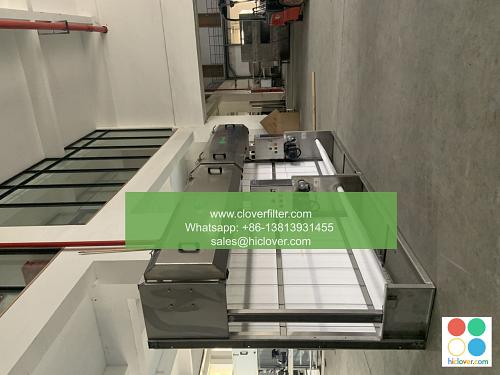Air Filter Regulations in the EU: A Comparative Analysis

The European Union (EU) has implemented various regulations to ensure the quality of air filters used in different applications, including industrial air filtration, commercial air purification, and residential air cleaning. This article provides a comparative analysis of the air filter regulations in the EU, highlighting the key aspects, testing methods, and certification requirements for different types of air filters.
Introduction to EU Air Filter Regulations
The EU has established a comprehensive framework for regulating air filters, which includes the EU Directive 2016/2284 on the reduction of national emissions of certain atmospheric pollutants, the EU Regulation 2016/2177 on the appearance and content of labels for air filters, and the EN 779:2012 standard for particulate air filters. These regulations aim to promote the use of efficient and effective air filters, reduce emissions, and protect public health.
Industrial Air Filtration Regulations
The EU has specific regulations for industrial air filtration, including the ATEX Directive 2014/34/EU for explosive atmospheres and the Machinery Directive 2006/42/EC for machinery safety. Industrial air filters must comply with these directives and meet the requirements for particulate matter (PM) capture efficiency, gas filtration efficiency, and pressure drop. The EN 1822:2019 standard for high-efficiency air filters is also applicable to industrial air filtration applications.
Commercial Air Purification Regulations
The EU regulations for commercial air purification focus on the IAQ (Indoor Air Quality) and the energy efficiency of air purification systems. The EU Directive 2009/125/EC on eco-design requirements for air conditioners and the EU Regulation 2015/1095 on the labelling of air conditioners with regard to their energy efficiency, apply to commercial air purification systems. The EN 13053:2020 standard for air cleaners for general ventilation provides guidelines for the testing and rating of commercial air purification systems.
Residential Air Cleaning Regulations
The EU regulations for residential air cleaning focus on the energy efficiency and performance of air cleaning systems. The EU Directive 2009/125/EC on eco-design requirements for air conditioners and the EU Regulation 2015/1095 on the labelling of air conditioners with regard to their energy efficiency, apply to residential air cleaning systems. The EN 13779:2016 standard for ventilation and air conditioning in non-residential buildings provides guidelines for the testing and rating of residential air cleaning systems.
Conclusion
In conclusion, the EU air filter regulations are comprehensive and cover various application areas, including industrial air filtration, commercial air purification, and residential air cleaning. The regulations aim to promote the use of efficient and effective air filters, reduce emissions, and protect public health. By understanding the different regulations and standards applicable to each application area, manufacturers and users can ensure compliance and select the most suitable air filters for their specific needs. The testing methods and certification requirements for air filters are crucial in ensuring the quality and performance of air filters in the EU market.
Recommendations for Future Developments
Future developments in EU air filter regulations are expected to focus on innovative technologies, such as nanofiltration and biological air filtration, and sustainable materials for air filter manufacturing. The EU is also expected to strengthen its regulations on indoor air quality and energy efficiency, which will drive the demand for more efficient and effective air filters. As the EU continues to update and refine its air filter regulations, it is essential for manufacturers and users to stay informed and adapt to the changing regulatory landscape.
By doing so, they can ensure compliance, reduce emissions, and promote better indoor air quality and outdoor air quality, ultimately contributing to a healthier and more sustainable environment. It looks like you didn’t include a prompt. Please go ahead and provide one, and I’ll do my best to assist you!

